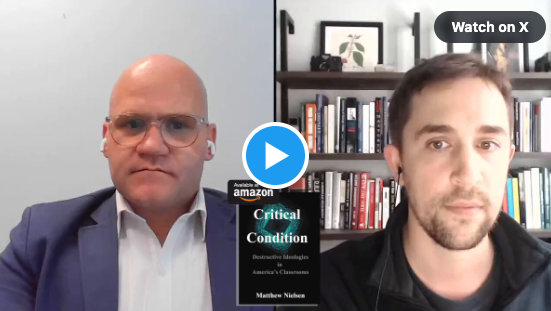by Justin Olson
In 2017, authors Evan Wyloge and Carrie Jung reported through a collaboration between the Arizona Center for Investigative Reporting and KJZZ that “a small group of builders bankroll bond campaigns and dominate K-12 construction contracts.” The authors evaluated hundreds of campaign reports filed between 2013 and 2016 by groups that supported school district bonds and overrides and found that a majority of the funding came from construction and design firms.
As Arizona voters will cast their ballots by the end of this week to decide the fate of 21 different school district bond proposals and 39 separate budget overrides, we thought it would be worthwhile to look at the campaign finance reports filed by the groups supporting this year’s ballot measures to see if Wyloge and Jung’s findings continue to hold true.
For our sample, we evaluated the reports of campaign committees supporting the seven largest bond proposals and the seven largest overrides. These proposals accounted for 72% of the total bond amount requested by all of Arizona’s school districts and 67% of the total override amount. This sampling resulted in the evaluation of 12 campaign committees since the Deer Valley Unified and the Gilbert Unified School Districts each made the top seven lists for both bonds and overrides.
Like Wyloge and Jung, we found that this year’s ballot measures were also primarily funded by the same small group of vendors that also consistently win the bids to build the projects that the campaigns support. Their 2017 article included data compiled by the Arizona Builders Exchange (AZBEX).
AZBEX indicated that more than half of the projects awarded through the public procurement process from 2013 to 2016 went to a small group of nine vendors. The group of nine included three construction firms (Chasse Building Team, CORE Construction, and McCarthy Building Companies), three architecture and design firms (Orcutt Winslow Architecture, ADM Group, and DLR Group) and three subcontractors (Pueblo Mechanical and Controls, Wholesale Floors, and Progressive Roofing).
Contributions from these nine vendors made up 48% of the contributions supporting the measures of the 12 school districts in our sample.
The top three contributors to these ballot measures were the three construction firms included in AZBEX group of nine vendors that consistently win the bids.
Chasse Building Team contributed more than any other vendor with a total contribution amount of $91,000. Chasse contributed to 11 of the 12 campaigns in our sample with contributions ranging from $5,000 to $9,800 for an average contribution amount of $8,273.
CORE Construction contributed the next highest amount with contributions totaling $85,000. CORE contributed to all 12 of the campaigns in the sample with contributions ranging from $1,000 to $9,500 and average contribution of $7,083.
McCarthy Construction contributed the third highest amount with contributions totaling $75,500. McCarthy contributed to 10 of the 12 campaigns with contributions ranging from $5,000 to $9,900 for an average contribution of $7,550.
While these nine vendors contributed nearly the majority of the funds received by these campaigns they were not the only vendors to support these efforts.
In fact, a full 86% of the campaign contributions received by these districts came from vendors while the remaining 14% came either from other committees or directly from individuals such as school district employees, parents and other members of the community.
Remarkably, several of the campaigns didn’t even bother to fundraise among individuals at all, instead, opting to fund 100% of their campaigns through vendors that have either won contracts with the school or hope to win them in the future. These campaigns included those for the bonds and overrides of Chandler Unified, Tolleson Union, Deer Valley Unified, and Higley Unified.
The campaign for Chandler Unified’s bond proposal raised more than any other campaign in our sample which is not surprising considering the $290 million bond proposal is the largest measure on the ballot. This campaign raised 100% of its $146,900 from vendors. The largest contribution of $17,500 came from Concord General Contracting, followed by a $10,000 contribution from HDA Architects and nearly $10,000 contributions from each of the three construction firms mentioned above: McCarthy ($9,900), Chasse ($9,800), and CORE ($9,500)
The practice of calling on the development community to fund school district campaigns is not unique to Arizona. For example, Will Huntsberry reported in the Voice of San Diego that “80 percent of the construction companies that donated $5,000 or more to pro-bond campaign groups in the last seven years received contracts with the San Diego Unified School District.”
Elena Kadvany, similarly, identified $74,500 of the $130,000 (or 57%) raised by the campaign supporting the Palo Alto School District’s bond measure was raised from construction, building and legal firms that contract with the district.
In 2012, David Olinger in the Denver Post reported the Neenan Construction Company contributed $30,000 to a bond effort of the Adams County Mapleton School District before being awarded the $53 million contract to build five schools. Similarly, George K. Baum & Co. contributed $30,763 and was selected to underwrite the bond for a fee that was seven times the rate charged on other bond sales around the same time.
And, lastly, in 2016, the California Policy Center’s Andrew Heritage reported on the practice in school bond campaigns across Orange County and described a concern of some elected officials of the appearance of a “pay-to-play” requirement.
As I reported earlier this month, if approved these bond proposals will authorize $1.6 billion in new school debt and a corresponding amount of new construction. The debt would be repaid by $2.5 billion of new property taxes to be levied over the life of the bonds. The overrides would authorize $297 million of annual spending above the districts’ budget limits which will also be funded through taxes on property.
As this is a mail-in only election, voters must mail their ballots in time for the post office to deliver the ballot to their county offices by next week’s November 5th Election Day.



